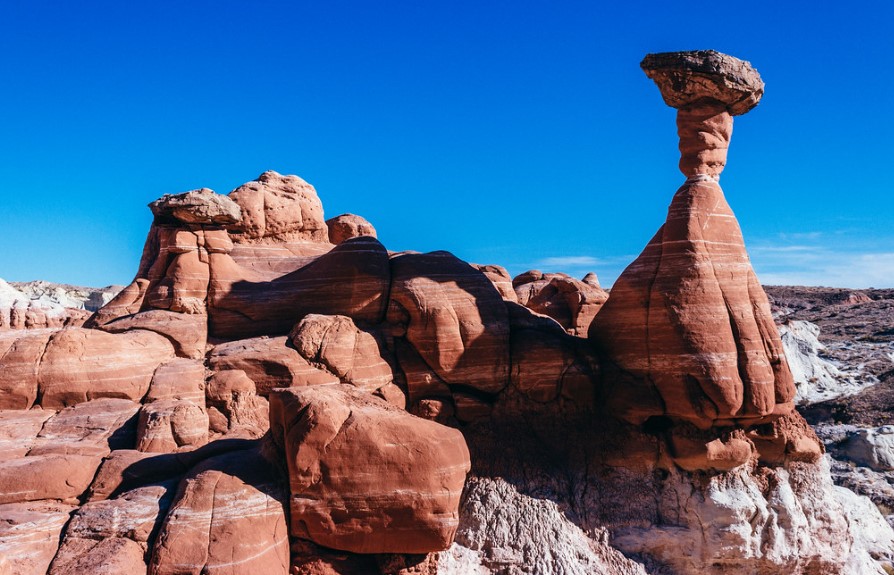Introduction
Toadstool Hoodoos in Arizona is a land of stunning natural wonders, and one of the most fascinating areas. These geological formations are located in the Vermilion Cliffs National Monument, in the northern part of the state. The Toadstool Hoodoos are unique rock formations that have been eroded by wind and water into tall, thin spires, capped by larger rocks that resemble mushrooms. In this article, we’ll take a closer look at the Toadstool Hoodoos, including their history, geology, and the best ways to experience them.
History
The Toadstool Hoodoos have been formed over millions of years, as layers of sedimentary rock were laid down, and then slowly eroded away by wind and water. The process of erosion continues today, and the Toadstool Hoodoos are constantly changing shape. The area was first settled by humans over 10,000 years ago, and evidence of their presence can still be seen in the form of ancient petroglyphs and other artifacts.
Geology
The Toadstool Hoodoos are made up of a type of rock called Navajo sandstone. This rock is relatively soft and porous, which makes it vulnerable to erosion by wind and water. Over time, the rock has been shaped into the unique formations that we see today, including spires, arches, and hoodoos. The colors of the rock range from pale beige to deep red, depending on the minerals present in the sediment.
How to Experience the Toadstool Hoodoos
Visitors to the Toadstool Hoodoos can experience the formations in a variety of ways. The easiest way to see them is to take a short hike along the Toadstool Trail, which is a well-marked path that leads through the heart of the hoodoos. The trail is about 1.5 miles long and is suitable for all ages and fitness levels. Along the way, visitors will see a wide variety of rock formations, including the iconic toadstool-shaped hoodoos.
For those who want a more challenging experience, there are several other trails in the area that lead to more remote parts of the Vermilion Cliffs National Monument. These trails require more hiking experience and may require a permit to access them.
Tips for Visiting the Toadstool Hoodoos
-
Wear comfortable hiking shoes and dress in layers, as the weather can change quickly.
-
Bring plenty of water and snacks, as there are no facilities along the trail.
-
Respect the fragile environment of the hoodoos by staying on the designated trails and not climbing on the formations.
-
Be aware of the wildlife in the area, including snakes and scorpions.
Best Time to Visit
The Toadstool Hoodoos can be visited year-round, but the best time to visit is in the spring or fall when the weather is mild and the crowds are smaller. Summer can be extremely hot, and winter can be snowy and icy, making hiking more difficult.
Toadstool Hoodoos trailhead
To reach the trailhead, take Highway 89A north from Flagstaff or south from Page, and turn onto BLM Road 1065. The trailhead is located at the end of this road, and there is a small parking area available. From the trailhead, it’s a short walk to the start of the Toadstool Trail.
The Toadstool Hoodoos are a fascinating natural wonder that is well worth a visit for anyone traveling to Arizona. Whether you’re an experienced hiker or a casual nature lover, there’s something for everyone to enjoy in this unique landscape.









